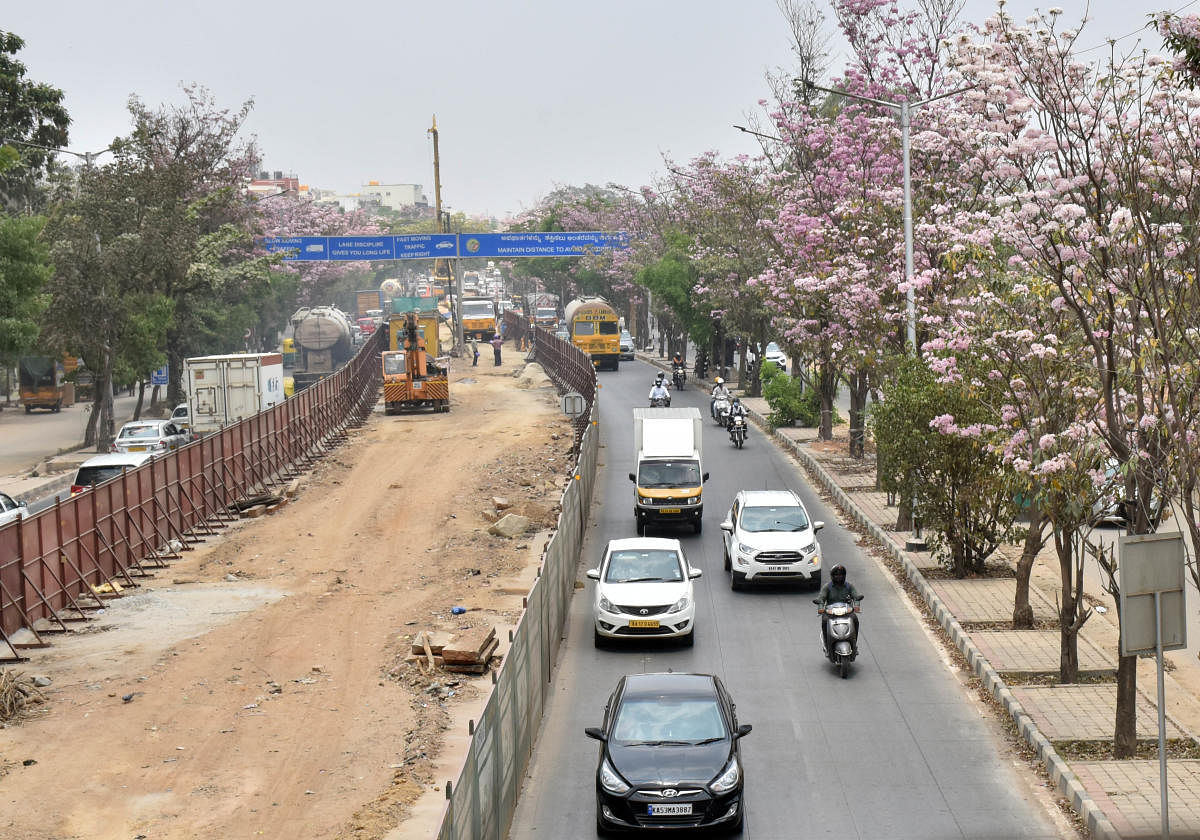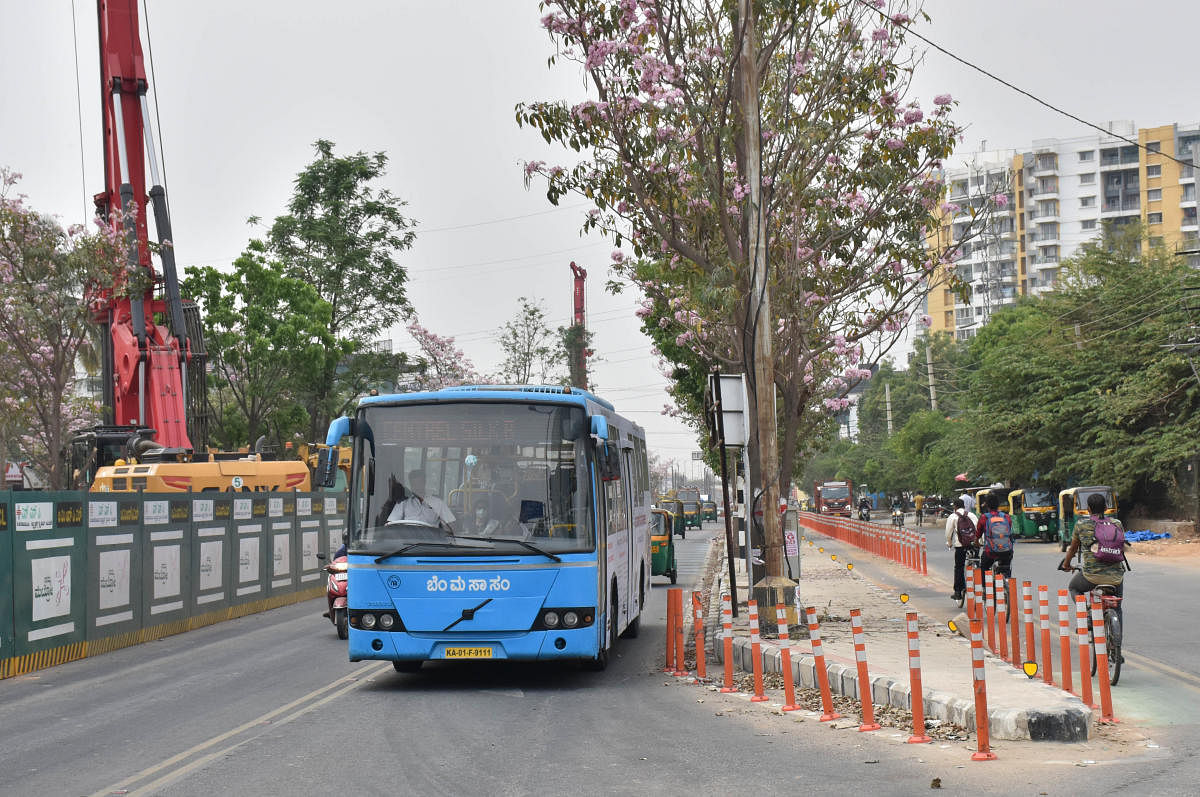

The Outer Ring Road (ORR) bus lane is an opportunity to come out of soul-sucking traffic, an opportunity to change, to choose right for today and for the future.
The bus lane on Outer Ring Road (ORR) was widely welcomed by Bengalureans in 2019. In its third year of operation, with the Namma Metro construction on ORR, there is demand from some quarters to dismantle the bus lane, so that private vehicles will face less congestion. It is ironic that those who cause congestion are complaining about congestion and pointing fingers at buses, which transport people efficiently and reduce congestion.
Introduction of bus lanes was a significant point of departure for Bengaluru. For the first time, the city was attempting a solution based on buses and sound mobility principles. And the bus lane delivered! It brought significant (22%) travel time improvement and more reliable service for bus commuters and a significant increase in bus ridership on ORR.
Lax enforcement
More work was needed to improve connectivity to ORR from surrounding areas and shift private vehicle users to buses. However, within a few months, the pandemic struck. Companies on ORR went for extended lockdown and work-from-home. The traffic on ORR dropped drastically. Bus lane enforcement became lax, bollards demarcating the lane were regularly run over and better connectivity to the bus lane from surrounding areas didn’t materialize.
But cycle lanes were being introduced on ORR. Bus lane had already demonstrated its potential. There still was a window of opportunity to transform mobility on ORR through inexpensive and less disruptive solutions. Instead, ORR Metro was given the go-ahead, despite demands to reassess the situation and delay the Metro till other solutions are fully explored.
Clamour to dismantle
Now, with the central lanes blocked off for the metro, private vehicles are facing congestion. There is rising clamour to dismantle the bus lane and allow mixed traffic on all lanes. This demand comes from a poor understanding of the problem. Bus transports a large number of people using the least road space compared to other vehicles. Dedicated bus lanes allow these large numbers of people to travel faster than those using cars and two-wheelers.
Bus lanes use road space more efficiently and equitably than mixed traffic lanes. The seemingly empty stretches on the bus lane, which irk other motorists, are not a waste of space. Simple observation will show that, even with these empty stretches, bus lanes transport more people on ORR per hour than mixed lanes.
When space is congested, what should we prefer - the lane that transports people efficiently using less space or the one that inefficiently uses road space? Should we dismantle the efficient lane or increase its capacity to carry more people and encourage more people to shift to the efficient lane?
Feeder buses
We definitely need more people to shift from mixed lanes to the bus lane – but not by taking over the bus lane, by getting into bus. What we need on ORR is more buses (based on traffic demand), feeder buses for better connectivity to bus lane from surrounding areas and more people shifting to bus, the better, more efficient mode.
Cycle lane on ORR too is facing flak from motorists. Cycle does for an individual what buses do for the mass transport using least amount of road space. Giving more priority and space to buses, cyclists and pedestrians on the road are the right and well known ways to discourage private vehicles and reduce congestion, pollution, emissions, fuel consumption and road accidents and make cities liveable. Yet, when car users face the pinch, the pressure is to dismantle the sustainable solutions and cede space to unsustainable inefficient modes.
Removing bus and cycle lanes on ORR so that private vehicles, the cause of congestion, have more space on roads is not acceptable. The Directorate of Urban Land Transport (DULT), Bangalore Metropolitan Transport Corporation (BMTC) and traffic police should work together with the public and companies on ORR to reduce private vehicles, to provide better connectivity to the bus lane from neighbouring areas and improve the cycle lanes.
More outreach and awareness building will help people understand why these sustainable interventions need to stay.
An opportunity
The bus lane is an opportunity for Bengaluru. An opportunity to come out of its soul-sucking traffic, an opportunity to change, an opportunity to choose right for today and for the future. Delhi faced a similar moment of reckoning in 2012, when disgruntled car users went after the Bus Rapid Transit (BRT) corridors.
Delhi chose to dismantle the BRT. Today, after a decade, that city has come full circle with its decision to introduce dedicated bus lanes. Delhi lost out on a decade of better mobility and better living by choosing mixed lanes over bus lanes. Let us not make the same mistake for Bengaluru and ORR. Let us choose the bus lane!
(The author is member, Bengaluru Bus Prayanikara Vedike. Inputs from Vinay K Sreenivasa, Genesia Rodrigues and Udit Khandelwal)
Check out DH's latest videos: